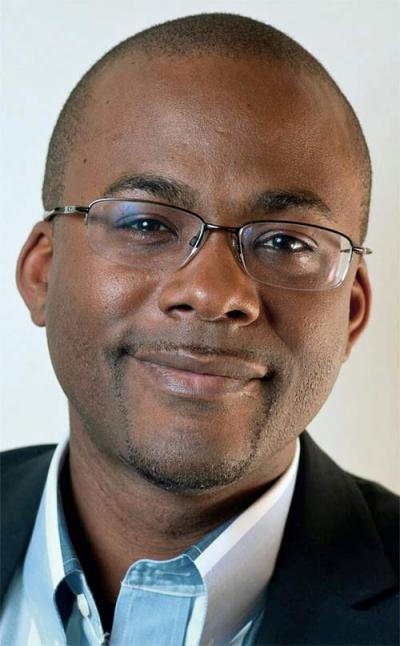

 The broadband sector, like the wireless sector, is one of the strongest growth areas of telecommunications. Unlike most OECD countries, where DSL tends to dominate, the majority of subscribers in the US fixed broadband market are cable subscribers. During 2010 the gap continued to widen as the cable companies accounted for 70% of new broadband subscribers compared to the telcos' 30%. Although new broadband networks such as FttH and WiMAX are being widely deployed, broadband competition in each region is still generally limited to one DSL and one cable operator.
The broadband sector, like the wireless sector, is one of the strongest growth areas of telecommunications. Unlike most OECD countries, where DSL tends to dominate, the majority of subscribers in the US fixed broadband market are cable subscribers. During 2010 the gap continued to widen as the cable companies accounted for 70% of new broadband subscribers compared to the telcos' 30%. Although new broadband networks such as FttH and WiMAX are being widely deployed, broadband competition in each region is still generally limited to one DSL and one cable operator.
 Research from Infonetics shows that last year was a strong year for data centre network equipment sales, due to a rebound from bare-bones 2009 spending levels and, more importantly, fundamental trends favouring investments in the data centre, such as the explosion of content and traffic, use of virtualization, and increasingly, cloud-based services and architectures.
Research from Infonetics shows that last year was a strong year for data centre network equipment sales, due to a rebound from bare-bones 2009 spending levels and, more importantly, fundamental trends favouring investments in the data centre, such as the explosion of content and traffic, use of virtualization, and increasingly, cloud-based services and architectures.
 Images of clouds have been used when discussing networks for quite some time. When traditional telecoms companies were selling point-to-point circuits a drawing of a cloud was sometimes used. The cloud symbol helped indicate the provider?s domain of responsibility, effectively hid the internal complexity of the network and focused on the end user. This was all fine when the product offered was an end-to-end circuit.
Images of clouds have been used when discussing networks for quite some time. When traditional telecoms companies were selling point-to-point circuits a drawing of a cloud was sometimes used. The cloud symbol helped indicate the provider?s domain of responsibility, effectively hid the internal complexity of the network and focused on the end user. This was all fine when the product offered was an end-to-end circuit.
 I don't know about you, but I'm starting to think that DNSSEC being so hot these days is a mixed blessing. Yes, it's wonderful that after so many years there is finally broad consensus for making DNSSEC happen. But being so prominent also means the protocol is taking shots from those who don't want to make the necessary software, hardware and operational modifications needed. And DNSSEC has taken some shots from those who just want to be contrarian.
I don't know about you, but I'm starting to think that DNSSEC being so hot these days is a mixed blessing. Yes, it's wonderful that after so many years there is finally broad consensus for making DNSSEC happen. But being so prominent also means the protocol is taking shots from those who don't want to make the necessary software, hardware and operational modifications needed. And DNSSEC has taken some shots from those who just want to be contrarian.
 With measurement networks rapidly evolving up to hundreds of nodes, it becomes more and more challenging to extract useful visualisations from tons of collected data. At the same time, geographical information related to Internet measurements (either known or inferred with state-of-the-art techniques) can be exploited to build tools based on geography as a common knowledge base. We wanted to develop a tool to visualise different classes of geographically annotated Internet data, e.g., topology, address allocation, DNS and economical data.
With measurement networks rapidly evolving up to hundreds of nodes, it becomes more and more challenging to extract useful visualisations from tons of collected data. At the same time, geographical information related to Internet measurements (either known or inferred with state-of-the-art techniques) can be exploited to build tools based on geography as a common knowledge base. We wanted to develop a tool to visualise different classes of geographically annotated Internet data, e.g., topology, address allocation, DNS and economical data.
 The mainly politically-driven debate - FttH versus wireless broadband - is spreading uninformed messages and half-truths in the market. And confusing messages from mobile operators are also blurring the picture. All well-informed people confirm that this is a nonsensical debate -- both infrastructures will coexist with, and supplement, each other.
The mainly politically-driven debate - FttH versus wireless broadband - is spreading uninformed messages and half-truths in the market. And confusing messages from mobile operators are also blurring the picture. All well-informed people confirm that this is a nonsensical debate -- both infrastructures will coexist with, and supplement, each other.
 An unprecedented cyberattack on the Canadian government also targeted Defence Research and Development Canada, making it the third key department compromised by hackers, CBC News has learned. ... While there is no definitive proof, of course, that China was behind these attacks, there is a lot of circumstantial evidence that points in that direction. China (allegedly) has a long history of engaging in espionage activities in order to gain access to information. In the United States, this is sometimes referred to as cyber warfare, but I think that cyber espionage is a better choice of terms.
An unprecedented cyberattack on the Canadian government also targeted Defence Research and Development Canada, making it the third key department compromised by hackers, CBC News has learned. ... While there is no definitive proof, of course, that China was behind these attacks, there is a lot of circumstantial evidence that points in that direction. China (allegedly) has a long history of engaging in espionage activities in order to gain access to information. In the United States, this is sometimes referred to as cyber warfare, but I think that cyber espionage is a better choice of terms.
 The gathering of coherent data on cybercrime is a problem most countries haven't found a solution for. So far. In 2011 it is a well known fact that spam, cybercrime and botnets are all interrelated. The French database Signal Spam may be a significant part of the solution to gather, analyse and distribute data on spam, phishing, cybercrimes and botnets, but also be a forum in which commercial mass e-mail senders and ISPs can work on trust.
The gathering of coherent data on cybercrime is a problem most countries haven't found a solution for. So far. In 2011 it is a well known fact that spam, cybercrime and botnets are all interrelated. The French database Signal Spam may be a significant part of the solution to gather, analyse and distribute data on spam, phishing, cybercrimes and botnets, but also be a forum in which commercial mass e-mail senders and ISPs can work on trust.
 According to IDC, smartphones outsold personal computers, laptops included in Q4 2010! Nokia just announced the demise of the Venerable Symbian in favour of Windows 7 phone and Microsoft's bing search engine! Tectonic shifts are under way to adapt to the rise of wireless broadband, an all IP world, and the growing weight of Apple and Google Android. It is also time to head once again for Barcelona with the Mobile World Congress starting on the 14th. Highlights this year?
According to IDC, smartphones outsold personal computers, laptops included in Q4 2010! Nokia just announced the demise of the Venerable Symbian in favour of Windows 7 phone and Microsoft's bing search engine! Tectonic shifts are under way to adapt to the rise of wireless broadband, an all IP world, and the growing weight of Apple and Google Android. It is also time to head once again for Barcelona with the Mobile World Congress starting on the 14th. Highlights this year?
 It is no secret that in the Caribbean people are crazy about their cell phones. In fact, the Caribbean has one of the highest levels of mobile phone penetration in the world. According to a report from BuddeComm, an Australia-based telecom research firm, mobile phone penetration in Latin America and the Caribbean reached an estimated 80% in early 2009, well above the world average which was about 58%. The report stated that Latin America and the Caribbean together now account for an estimated 12% of the world's 3.97 billion mobile subscribers.
It is no secret that in the Caribbean people are crazy about their cell phones. In fact, the Caribbean has one of the highest levels of mobile phone penetration in the world. According to a report from BuddeComm, an Australia-based telecom research firm, mobile phone penetration in Latin America and the Caribbean reached an estimated 80% in early 2009, well above the world average which was about 58%. The report stated that Latin America and the Caribbean together now account for an estimated 12% of the world's 3.97 billion mobile subscribers.